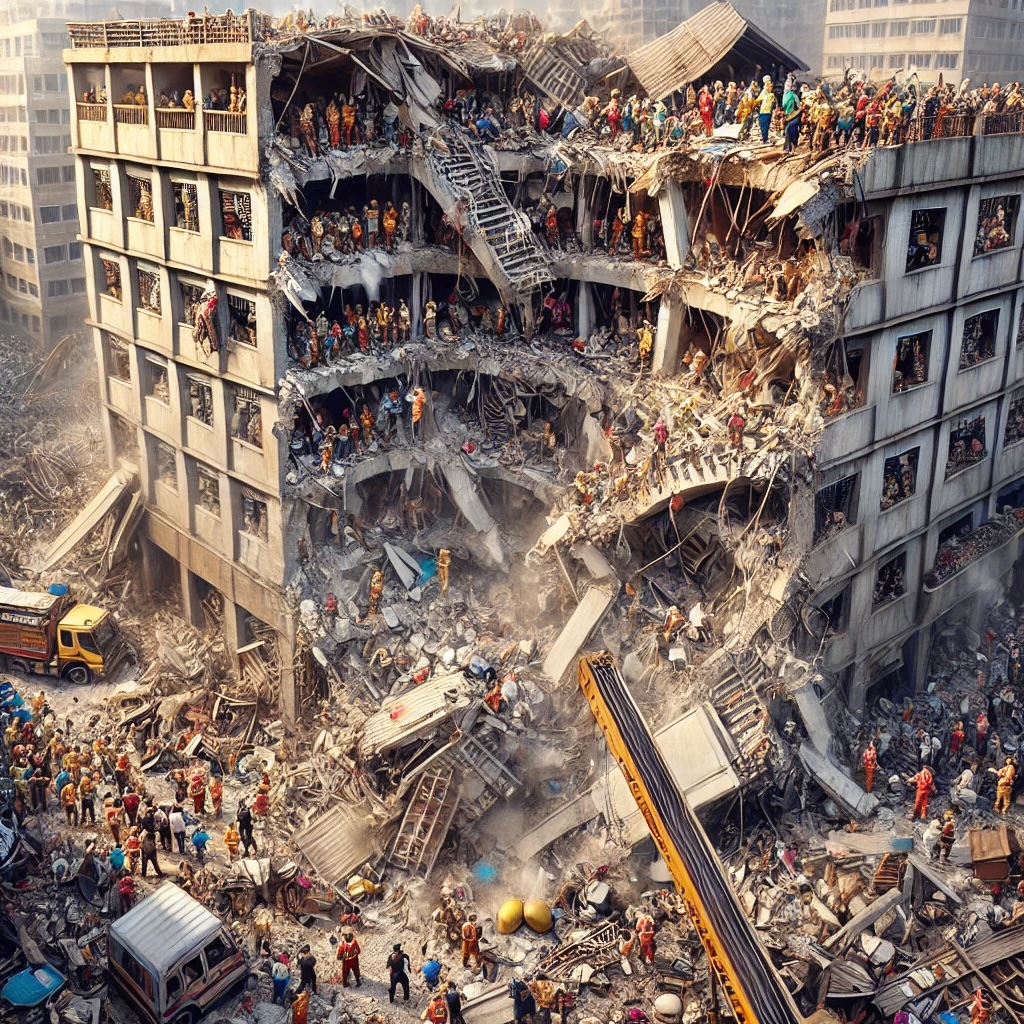The Rana Plaza Disaster: A Tragedy that Changed the Garment Industry
On April 24, 2013, the world was shaken by one of the deadliest industrial disasters in history. The Rana Plaza collapse in Dhaka, Bangladesh, claimed over 1,100 lives and left more than 2,500 injured. This tragedy exposed the severe dangers faced by workers in the global garment industry and brought the issue of corporate responsibility and workers’ rights into sharp focus.
The Day of the Disaster
Rana Plaza was an eight-story commercial building that housed several garment factories producing clothing for major international brands. Despite visible cracks in the building’s structure the day before, factory workers were forced to return to their jobs. When the building collapsed during the morning rush of workers, the consequences were devastating. The floors pancaked, trapping thousands under rubble, and rescue efforts lasted for weeks, uncovering harrowing stories of survival and loss.

Why Rana Plaza Collapsed
The collapse was a direct result of a combination of factors, all tied to negligence, corruption, and the pursuit of profit at the expense of safety. Rana Plaza had been illegally expanded; the upper floors were not designed to support the weight of the heavy machinery used in garment production. Moreover, the building’s structural integrity had been compromised by poor construction materials and lax safety standards. Factory owners, under pressure to meet production deadlines for Western brands, ignored warnings about the building’s condition. Tragically, workers had no choice but to risk their lives, as refusing to work meant losing their livelihoods.
The Global Response
The Rana Plaza disaster sparked outrage across the world, putting the spotlight on the exploitative conditions in which millions of garment workers labor. In its aftermath, global attention shifted to the fashion industry’s supply chains, with consumers and advocacy groups calling for greater transparency and accountability.
The catastrophe led to the creation of the Bangladesh Accord on Fire and Building Safety, a legally binding agreement between fashion brands, trade unions, and NGOs, aimed at improving workplace safety in Bangladesh’s garment industry. The Accord introduced mandatory factory inspections and corrective actions to prevent future tragedies. Its implementation was hailed as a significant step toward protecting workers in an industry notorious for its unsafe conditions.
The Human Cost of Fast Fashion
Rana Plaza forced the world to confront the true cost of fast fashion. The disaster highlighted the profound disconnect between the high demand for cheap, trendy clothes in developed countries and the dangerous, low-wage labor that enables such consumption. Many of the victims of Rana Plaza were young women, the backbone of the garment industry, who worked long hours in unsafe environments for poverty wages.
As consumers became more aware of these conditions, there was a shift towards ethical fashion. Brands that were implicated in the Rana Plaza disaster faced public backlash and were pushed to reassess their sourcing practices. Some consumers began to demand more ethical clothing options, contributing to the rise of slow fashion, which emphasizes sustainable and humane production practices.
Lessons Learned and Challenges Ahead
While the Rana Plaza disaster led to reforms and a global conversation about workers’ rights, challenges remain. Many factories in developing countries still operate under unsafe conditions, and workers often lack the power to advocate for their rights. While the Bangladesh Accord has improved safety for many garment workers, similar initiatives have yet to be implemented widely in other countries with significant garment industries, like India, Cambodia, and Vietnam.
The drive for profits continues to overshadow the need for human dignity in many parts of the supply chain. Brands are still grappling with how to balance ethical production with consumer demand for affordable fashion. While some progress has been made, there is still a long way to go to ensure that tragedies like Rana Plaza never happen again.
Moving Forward
The Rana Plaza disaster remains a stark reminder of the human cost of fast fashion and the dangerous working conditions faced by millions of workers around the world. The reforms that followed show that change is possible, but the responsibility for ensuring safe working conditions does not rest solely with governments or factory owners. Fashion brands, consumers, and policymakers must work together to demand transparency and accountability across the industry.
As consumers, we have the power to influence change. By supporting ethical fashion brands, demanding transparency, and raising awareness, we can help build a future where no worker has to risk their life for the clothes we wear.
Rana Plaza is a sobering chapter in the story of modern industry—a call to action that continues to resonate today.